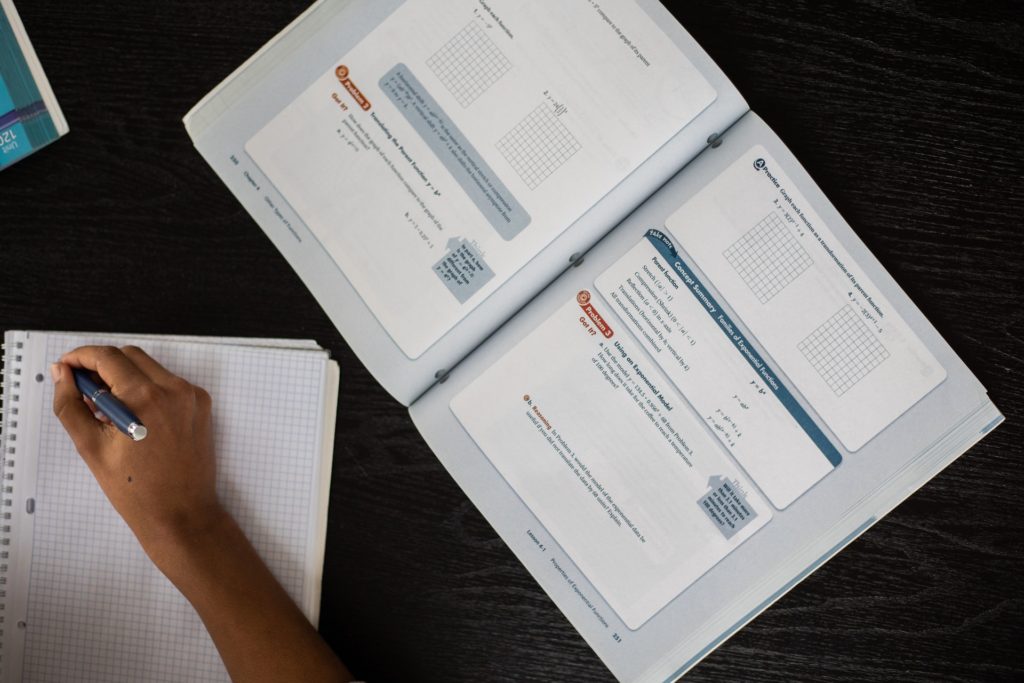Table of Contents
A diagnostic assessment is a type of test, usually given at the beginning of a course or unit, which attempts to gauge students’ current abilities in the learning objectives of a course in order for the teacher to get a baseline of what needs to be covered moving forward. A diagnostic assessment should never be kept as a permanent course grade, especially when averages are employed to make a final score on a course for students. This doesn’t mean that diagnostic assessments shouldn’t be graded at all however.
Should a Diagnostic Assessment be Graded?
A useful diagnostic assessment needs to be graded in order to get data points for each student on their current levels of understanding on course objectives so that teachers can make mindful decisions about what content to emphasize, what targeted interventions might be necessary, and what concepts students already understand well.
Teachers who don’t include diagnostic assessments will not be able to make as mindful, data driven decisions on what to include in lesson plans as they will take longer to identify student areas of weakness. A final number grade isn’t always necessary, but teachers should input student answers onto a spreadsheet for themselves to see which questions students most often got wrong and which no students missed.
In addition to the teacher taking note of grades and areas of weakness on diagnostic assessments, these grades also need to be shared with the students themselves in order to help them identify their own areas of weakness and strength in order to get more involved in their educational achievement.
The diagnostic assessment(s) can be accompanied by a class activity where students grade their own diagnostics and then attempt to identify which areas they would like to improve on during the course. This helps to move the onus of grades and performance from just the teacher to the student as well.
Examples of a Diagnostic Assessment
The diagnostic assessment, the following self assessment and reflection, along with mindful goal setting can work as the lesson plans for the first days of any course. For example, an English class might have students read a short story, answer a series of questions about the story content and authorial techniques followed by a brief paragraph response analyzing authorial intent.
This will allow the teacher to ensure students are able to read and understand an appropriately difficult text, are able to identify specific literary techniques and use this important class vocabulary accurately in a structured response. If the teacher sees that students seemed to understand most of the tested literary terms, but their paragraph and sentence structure were disorganized and full of errors, the teacher can focus on including more writing workshops but also know that they can confidently start introducing more difficult literary terms.
Similarly, a science teacher might include a few multiple choice and short answer questions about basic concepts in biology, chemistry, and physics appropriate for the grade level they are teaching followed by some word problems based on an experimental design to check students’ understanding of not only content, but also of how scientific experimentation works.
The problems should sometimes cover students’ knowledge of concepts through shorter questions meant to test students’ knowledge of vocabulary such as “What is photosynthesis?” If the teacher sees that many students seem to lack a lot of basic science vocabulary they will know that they need to include some review of terminology before going into their planned lessons so that students will have the fundamental understanding they need to access the course material originally planned.

Qualities of an Effective Diagnostic Assessment
1. Multiple Question Types to Test Different Skills
Questions in a diagnostic assessment should sometimes be multiple choice to assess students’ ability to recognize correct information as well as sometimes being short answer questions to test students’ ability to fully recall and explain concepts without reminders, a more difficult and different task for the brain. Teachers might also include long answer paragraph responses to see how students structure reports and write about the course content.
This can give a clearer picture of how much students understand as there isn’t just right and wrong, but different levels of nuanced understanding a student can show in a longer written response. Even in something like math, a written response can give students who struggle with math, such as students with Dyscalculia, but excel in writing to show their understanding in a way that doesn’t sell them short.
2. Mindfully and Clearly Divided Into Sections
Diagnostic assessments should be clearly and mindfully divided into sections to explicitly highlight to students and the teacher themselves what is being assessed and help make clear which areas students need to improve. For example there should be a divide in the questions testing vocabulary from questions testing students conceptual understanding. This helps students and teachers see what areas they need to focus on as they move forward in the course.
One good way to divide up a diagnostic test is to have a section testing students’ vocabulary knowledge, their content knowledge, and their expressive knowledge. The vocabulary section can consist of short questions, even just “What is ___” in either multiple choice or short answer form.
The purpose of this section is to ensure students understand the basic words that the teacher and the course materials will be using. If students don’t understand the basic vocabulary of problems or instruction sheets, they won’t be able to even begin projects or attempt educated guesses on test answers. This is the most fundamental level of learning, being able to take in and understand what is being said.
The content knowledge section can include a bit more reading of longer questions and should focus on testing students’ knowledge of how terms and concepts work together. For example, while the vocabulary section of a social studies diagnostic might ask “What is a colony?”, the content section might ask students to list three consequences of colonialism.
Students will still need to know the vocabulary of “colony” in order to be able to answer, but the question digs deeper into how much they truly understand about what colonialism is and how it has played a role in global development. Knowing how different key class terms work together conceptually is the second level of understanding students need to show in a class.
The expressive knowledge section can often include similar questions to the content section, but require students to organize their response and use full sentences. This will help the teacher see which students are able to just list some vague ideas in the content section vs. which ones have a solid understanding that they can express clearly and eloquently.
From understanding terms, to knowing the significance of terms, to being able to explain that significance in a clear and structured response, this style of diagnostic will show teachers not only what level of content students can understand, but their ability level based on a clear three tiered system.
3. Results Reflected Upon by Students and Teachers.
Information from a diagnostic should always be shared with students and reflected on mindfully during class. Tests aren’t useful educational tools if students simply write them and then never learn from their mistakes. In order to make diagnostic tests useful, students need to know which areas they need to improve most and have an objective baseline to compare future tests to in order to gauge whether their study practices have been effective for reaching the goals they set after the diagnostic.
Research on diagnostic testing shows that students need to mindfully reflect on their tests and continue to assess as they receive more data from grades going forward in order to effectively develop good approaches to learning. (Delgado et al.)
After students self grade their diagnostic assessments, they should decide on what they would like to improve on before the next test and decide on two to three ways they are going to mindfully study to improve that skill over the next few weeks of the course. Students often are able to identify their weaknesses, especially naturally negative teens, but generally fail to choose appropriate study strategies to target those weaknesses.
For example, students who lack vocabulary knowledge might say that they want to “study harder” or “focus on learning more vocabulary”, but this doesn’t actually have a strategy for how they are going to change what they have been doing before. Instead students should pick things like “Create and use flash cards for at least 5 new terms each week” or “Keep a vocabulary list of terms I don’t understand, search up the definition, and copy it down 10 times.”

While strategies should be mindful and not overly vague, teachers should avoid forcing their goals or their study strategies on students, at least right at the beginning of the year.
While guidance and suggestions are great, students who choose their own learning goals and try out strategies that they came up with themselves will be far more likely to actually follow through with their ideas and can be more mindful in learning how to learn themselves rather than just always going to the teacher as the arbiter of all knowledge and relying on them to know how to move forward.
Even if students’ study strategies are doomed to fail, this can be used as a learning point at the second test. When students see that they haven’t achieved their goals and are still struggling to score higher in their targeted sections, they can then pivot to a new strategy and might be more open to guidance if they were stubborn before.
It is more important to focus on long term learning rather than what will help the student most at that moment. One failed test is not a big deal, but a student realizing they actually need to listen to the teacher’s advice if they want to see improvement can make a permanent impact on their approaches to learning.
Diagnostic Assessment vs. Formative Assessment
A diagnostic assessment is an assessment that is done before the introduction of materials to assess students’ background knowledge in that area, while a formative assessment is a test to see how far along students have come since the original diagnostic. Formative assessments work as that second data point for teachers and students to assess their progress on their goals for the course and a chance to consider new strategies as new struggles arise or goals are largely met and a new challenge is needed.
Many schools will try to separate out formative assessments from summative assessments by saying that formative assessments are ones that are ungraded and just work as check ins on student knowledge rather than being a formal test. This approach is done to reduce the emphasis on grades in a course, but the distinction is a bit silly as summative assessments should also be used to check in on student progress. Whether a teacher decides to keep the grade or simply have it as a classwork activity, all tests should be viewed as “formative” and should be mindfully reflected upon.
Conclusion
Teachers should never have students simply take a test, give it a grade, and then move on. If a test isn’t corrected or at least reflected upon mindfully to create new study strategies, it will not actually lead to learning. Just putting down a wrong answer and getting a bad grade doesn’t tell students what the right answer is or show them how to get better answers next time.
In reality, all tests, whether termed diagnostic, formative, or summative, should work the exact same way. All tests should help students see where they are, what areas they need to improve on, and then be used to make decisions on study strategies for the following section of the course.
References
Delgado, Darwin Gustavo, et al. “Permanent Application of Diagnostic Assessment on Learning Teaching Process.” International Journal of Linguistics, Literature and Culture, vol. 5, no. 4, 2019, pp. 34–45., https://doi.org/10.21744/ijllc.v5n4.699.



